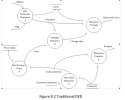- Joined
- 11/24/23
- Messages
- 9
- Points
- 3
I would like to share my recent article about a theory of (pricing) models. The goal is to propose a new way to manage model risk, to find maximum and minimum limits for an exotic price (infact everything agrees on plain vanilla prices by all people have different views on exotic quotes, that is the origin of model risk at the end) and finally finding a natural way to introduce a dynamic on implied volatility surface.
Hope to receive some comments and opinions from you.
Thanks
Abstract
This article introduces a foundational framework for pricing models, specifically a multiverse model theory. The objective is to establish a new paradigm for equity option pricing. The novel theory operates on two levels: practical, where it establishes and computes price boundaries in incomplete markets, defines model risk clearly, and reprices plain vanilla market data without calibration; and conceptual, developing a comprehensive theory of models, providing insights on introducing a coherent dynamics of the forward volatility surface, and suggests a possible origin of market incompleteness where the volatility of the forward volatility surface and market incompleteness are linked. The fundamental concept involves a shift from a theory based on contingent claims, reliant on a single ideal model, to a theory encompassing all possible (potentially infinite) well-formed models. These models must adhere to a set of axioms. The approach to developing this theory of models involves: i) Using a forward transition matrix to represent a model. Models differ in their forward transition matrices but agree on the spot transition matrix. ii) Defining axioms for selecting well-formed models by imposing restrictions on the form of the forward volatility surface. iii) Translating the high-level axioms into numerous elementary low-level conditions expressed in terms of transition matrix elements. This leads to a complex linear programming problem that can be solved by simplex algorithm.
This chain of steps results in a new methodology where an infinite number of equally valid well-formed models can evaluate exotic payoffs, establishing price boundaries for exotics (a signature of market incompleteness).
In summary, this proposed approach introduces a paradigm shift in managing exotics, wherein models themselves become the focus of the theory.
Link SSRN:
Multiverse Pricing Models by Marco Airoldi :: SSRN
Hope to receive some comments and opinions from you.
Thanks
Abstract
This article introduces a foundational framework for pricing models, specifically a multiverse model theory. The objective is to establish a new paradigm for equity option pricing. The novel theory operates on two levels: practical, where it establishes and computes price boundaries in incomplete markets, defines model risk clearly, and reprices plain vanilla market data without calibration; and conceptual, developing a comprehensive theory of models, providing insights on introducing a coherent dynamics of the forward volatility surface, and suggests a possible origin of market incompleteness where the volatility of the forward volatility surface and market incompleteness are linked. The fundamental concept involves a shift from a theory based on contingent claims, reliant on a single ideal model, to a theory encompassing all possible (potentially infinite) well-formed models. These models must adhere to a set of axioms. The approach to developing this theory of models involves: i) Using a forward transition matrix to represent a model. Models differ in their forward transition matrices but agree on the spot transition matrix. ii) Defining axioms for selecting well-formed models by imposing restrictions on the form of the forward volatility surface. iii) Translating the high-level axioms into numerous elementary low-level conditions expressed in terms of transition matrix elements. This leads to a complex linear programming problem that can be solved by simplex algorithm.
This chain of steps results in a new methodology where an infinite number of equally valid well-formed models can evaluate exotic payoffs, establishing price boundaries for exotics (a signature of market incompleteness).
In summary, this proposed approach introduces a paradigm shift in managing exotics, wherein models themselves become the focus of the theory.
Link SSRN:
Multiverse Pricing Models by Marco Airoldi :: SSRN


